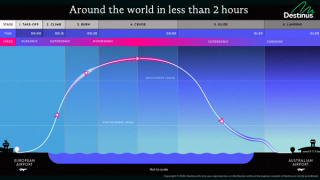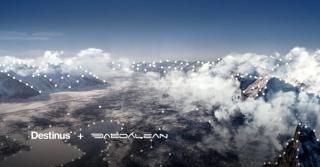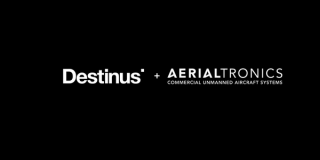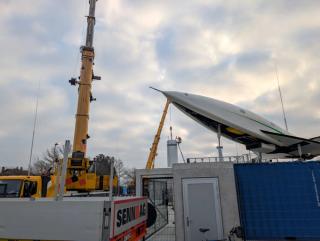Providing our hyper express delivery service requires an extremely high-speed and high-altitude flight: our vehicles fly in-between current airplane envelopes and low altitude satellites. That’s why we call them near-space vehicles or Hyperplanes, designed as single stage to destination (SSTD), horizontal take-off and horizontal landing (HTHL) systems. Let’s describe what it means in more detail and how we plan to fly them.

As shown in our Concept of Operations (CONOPS) above, the hyperplane takes-off from a starting Hyperport, an airport with integrated infrastructure for hydrogen handling and with a mission control center for unmanned aerial vehicles (UAVs), in this example from Europe. It then brings cargo to a far destination hyperport, in this example to Australia. Our flight takes less than 2 hours (compared to the usual current 24h, with two or more flight segments), releases no CO2 emissions (compared to the usual hundreds of tons using jet fuel), and is composed of multiple phases:
- Take off is horizontal from a common airport runway and a first acceleration phase is performed with an advanced airbreathing engine. Operations are similar to those of a normal airplane, with the difference that our vehicles quickly start climbing and accelerating to supersonic velocities in regions where noise boom is not a problem.
- We keep gaining altitude and speed during a high-altitude climb phase as we ignite the chemical rocket engine. Thanks to this chemical boost the hyperplane reaches the mesosphere at altitudes above 50 km and hypersonic speeds above Mach 10 during the cruise phase. In comparison, intercontinental airplanes typically reach the cruise phase around 11 km in altitude and at a velocity of Mach 0.8 (below the speed of sound).
- We cruise at hypersonic speed in a low gravitational environment for about 30 minutes. At these high velocities, it’s a challenge to keep the structure cold. Therefore, we are developing a unique active cooling system solution that converts the thermal energy generated by the friction with air into propulsion. Keeping the structure cold enough to survive the external hot flow conditions, while powering the rocket engines.
- Once closer to the destination, we gently reduce the amount of thrust generated and we enter progressively into a gliding phase.
- Finally, during the approach and landing phase, we reactivate our airbreathing engine and integrate the unmanned hyperplane into the destination air traffic.
After landing, we deliver the cargo to the logistic team and start a vehicle maintenance phase on ground. The objectives are to inspect the hyperplane and to prepare it for the next flight.
Overall the hyperplane and the mission are optimized to achieve our goals: provide the fastest delivery service in the world.
Prepare for a new type of express delivery!








